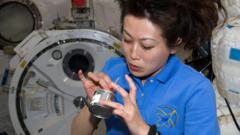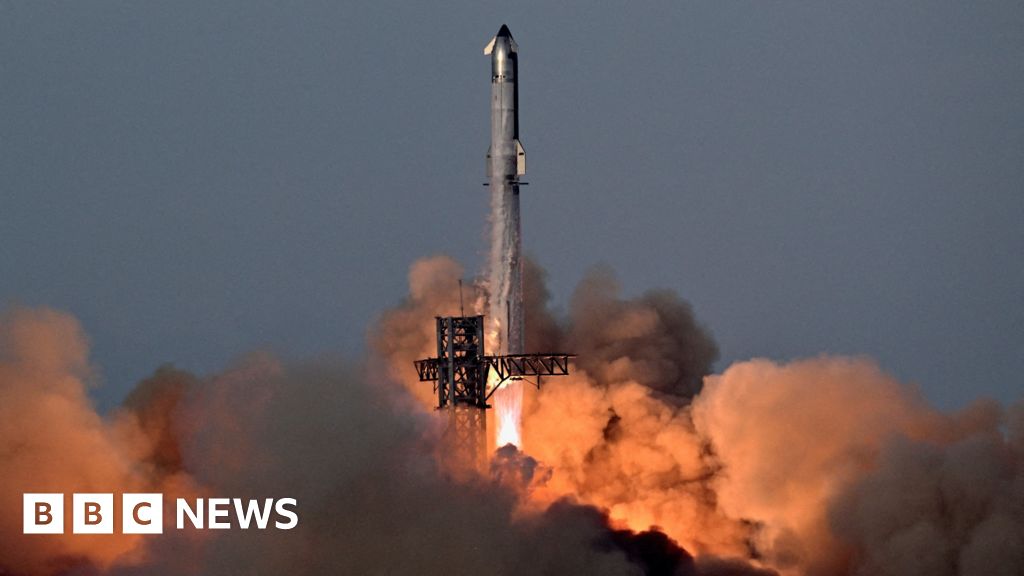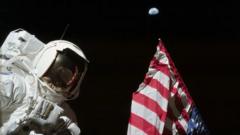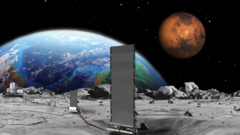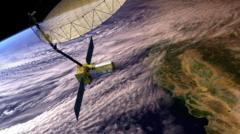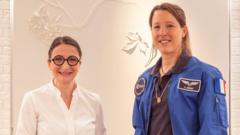Empty line 4
In a groundbreaking initiative, a mission launched by the European Space Agency (ESA) aims to evaluate the feasibility of cultivating lab-grown food in the unique conditions of space. This experiment, which took to the skies earlier today, seeks to explore the potential for creating sustenance like steak and mashed potatoes using advanced biotechnological methods within a low-gravity environment.
The mission is part of ESA's efforts to pioneer innovative solutions for feeding astronauts, which is currently estimated to cost around £20,000 per day per astronaut. Dr. Aqeel Shamsul, CEO of Frontier Space, emphasizes that establishing lab-grown food production in orbit is essential for Nasa's aim of making humanity a multi-planetary species. The ultimate goal is to set up small-scale food manufacturing units on the International Space Station (ISS) within the next two years.
The process involves cultivating key food components such as proteins, fats, and carbohydrates in specially designed bioreactors. While lab-grown chicken is already available in some markets, the prospect of growing beef in space, claimed to have environmental benefits on Earth, could significantly enhance astronauts' diets without the exorbitant costs associated with transporting food from Earth.
Recently launched aboard a SpaceX Falcon 9, a miniaturized bioreactor of the ESA mission will orbit the Earth for a brief period before returning to a recovery vessel off the coast of Portugal for analysis. This experiment intends to ascertain whether food can be cultivated successfully in the challenging conditions of space, including low gravity and elevated radiation levels.
Though laboratory techniques have shown promise, the current state of food cultivated in space resembles an unappetizing paste. Culinary designer Jakub Radzikowski is experimenting using ingredients from natural sources to prepare dishes that provide comfort to astronauts from diverse backgrounds, awaiting regulatory approval to incorporate lab-grown components.
Among the taste testers is Dr. Helen Sharman, the UK's first astronaut, who reflects on the potential impact on space missions. She asserts that lab-grown food could enhance the nutritional profiles needed for long-duration space travel, addressing specific dietary changes faced by astronauts.
As this experiment unfolds, the promise of lab-grown food extends beyond mere nourishment, positioning it as a vital component in the quest for sustainable human presence in space. The melding of culinary innovation and space exploration could herald an exciting new chapter in our cosmic journey.
In a groundbreaking initiative, a mission launched by the European Space Agency (ESA) aims to evaluate the feasibility of cultivating lab-grown food in the unique conditions of space. This experiment, which took to the skies earlier today, seeks to explore the potential for creating sustenance like steak and mashed potatoes using advanced biotechnological methods within a low-gravity environment.
The mission is part of ESA's efforts to pioneer innovative solutions for feeding astronauts, which is currently estimated to cost around £20,000 per day per astronaut. Dr. Aqeel Shamsul, CEO of Frontier Space, emphasizes that establishing lab-grown food production in orbit is essential for Nasa's aim of making humanity a multi-planetary species. The ultimate goal is to set up small-scale food manufacturing units on the International Space Station (ISS) within the next two years.
The process involves cultivating key food components such as proteins, fats, and carbohydrates in specially designed bioreactors. While lab-grown chicken is already available in some markets, the prospect of growing beef in space, claimed to have environmental benefits on Earth, could significantly enhance astronauts' diets without the exorbitant costs associated with transporting food from Earth.
Recently launched aboard a SpaceX Falcon 9, a miniaturized bioreactor of the ESA mission will orbit the Earth for a brief period before returning to a recovery vessel off the coast of Portugal for analysis. This experiment intends to ascertain whether food can be cultivated successfully in the challenging conditions of space, including low gravity and elevated radiation levels.
Though laboratory techniques have shown promise, the current state of food cultivated in space resembles an unappetizing paste. Culinary designer Jakub Radzikowski is experimenting using ingredients from natural sources to prepare dishes that provide comfort to astronauts from diverse backgrounds, awaiting regulatory approval to incorporate lab-grown components.
Among the taste testers is Dr. Helen Sharman, the UK's first astronaut, who reflects on the potential impact on space missions. She asserts that lab-grown food could enhance the nutritional profiles needed for long-duration space travel, addressing specific dietary changes faced by astronauts.
As this experiment unfolds, the promise of lab-grown food extends beyond mere nourishment, positioning it as a vital component in the quest for sustainable human presence in space. The melding of culinary innovation and space exploration could herald an exciting new chapter in our cosmic journey.

